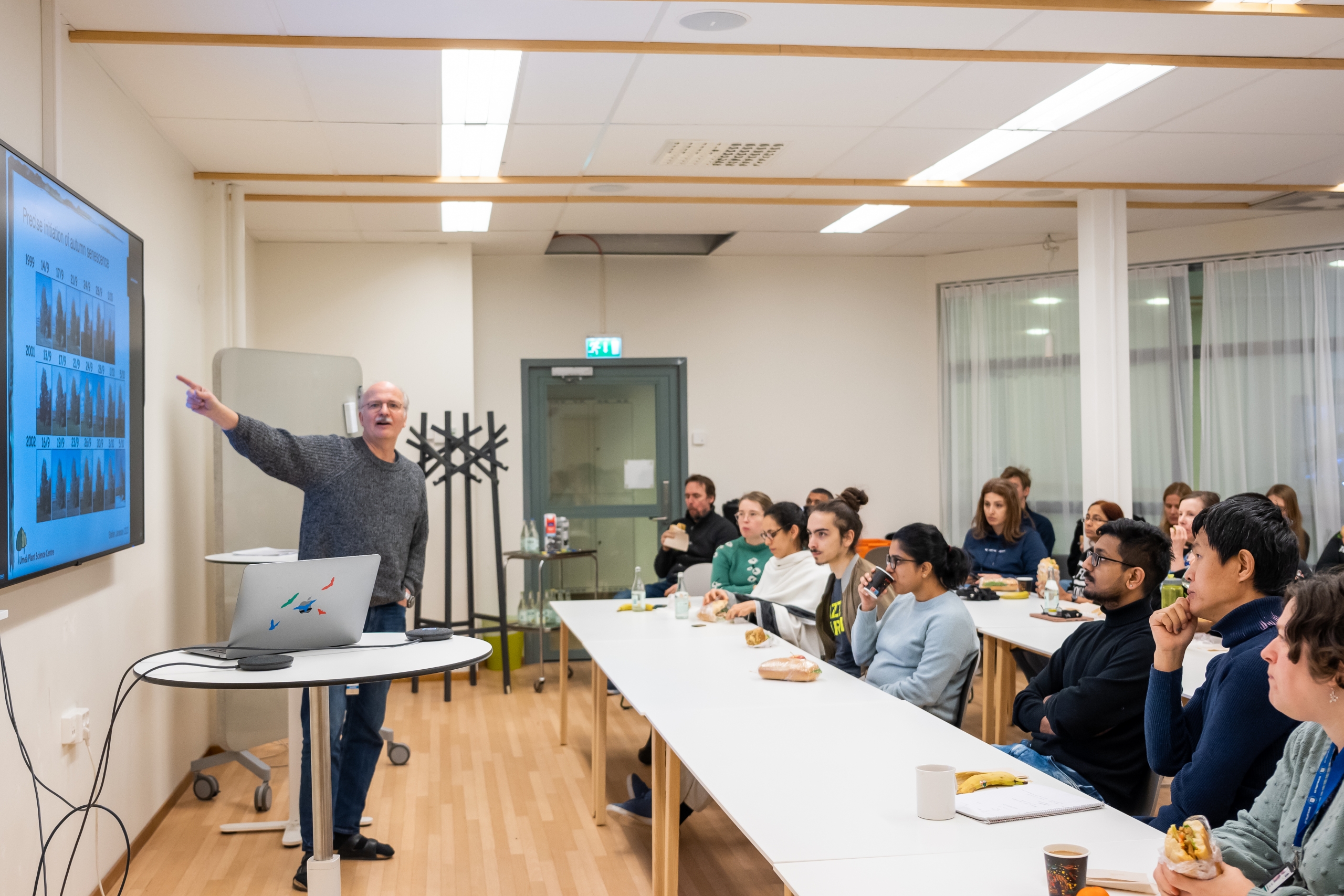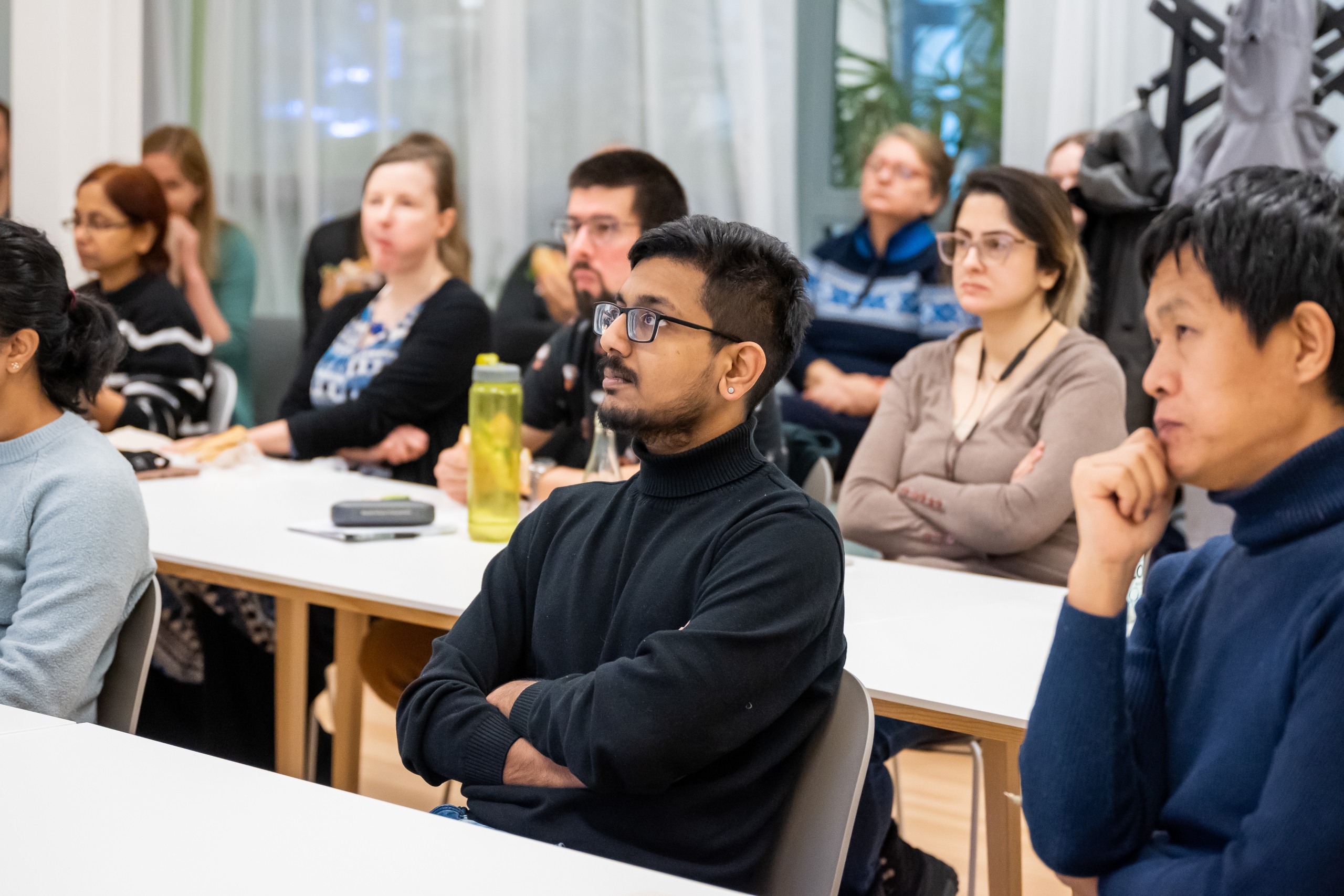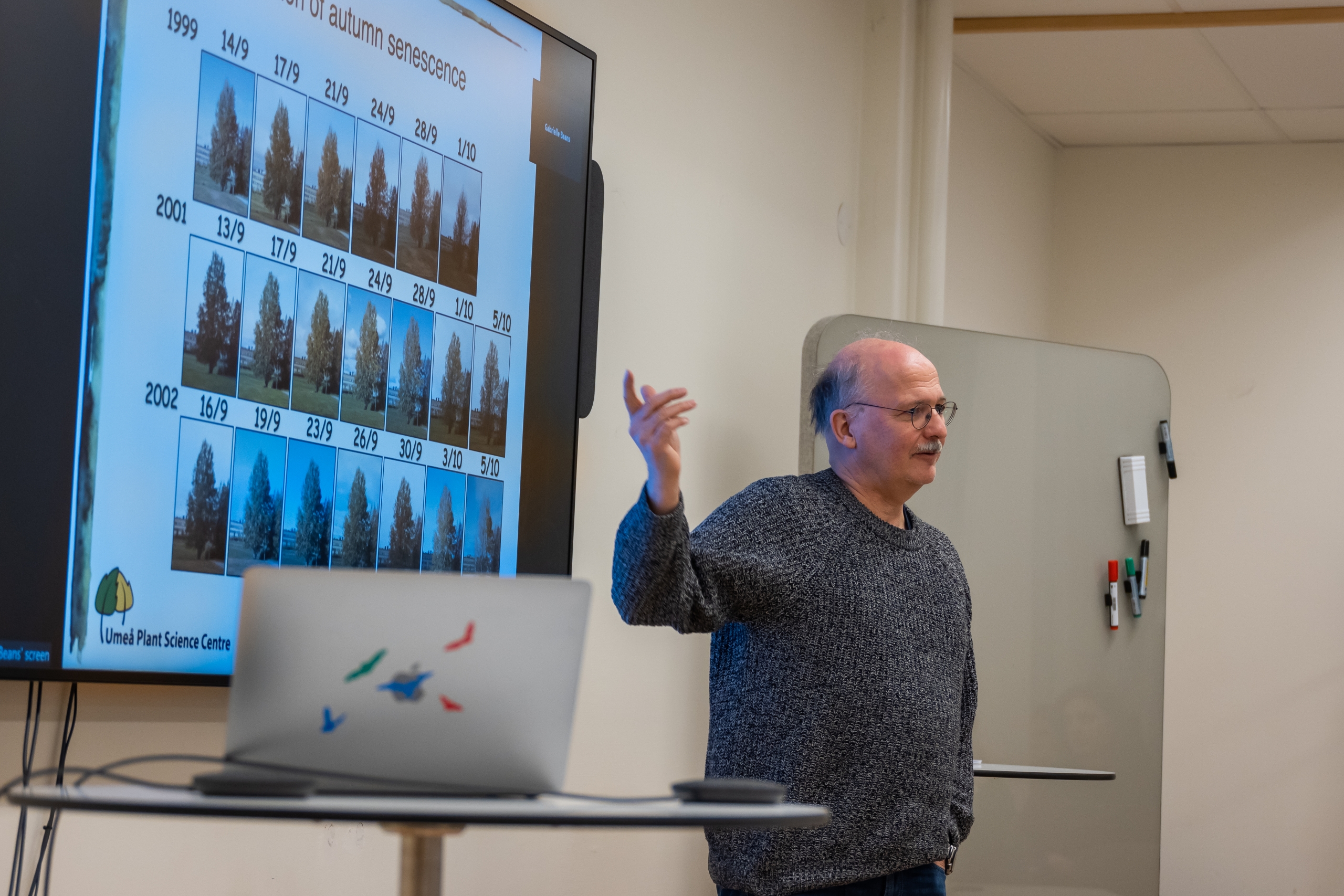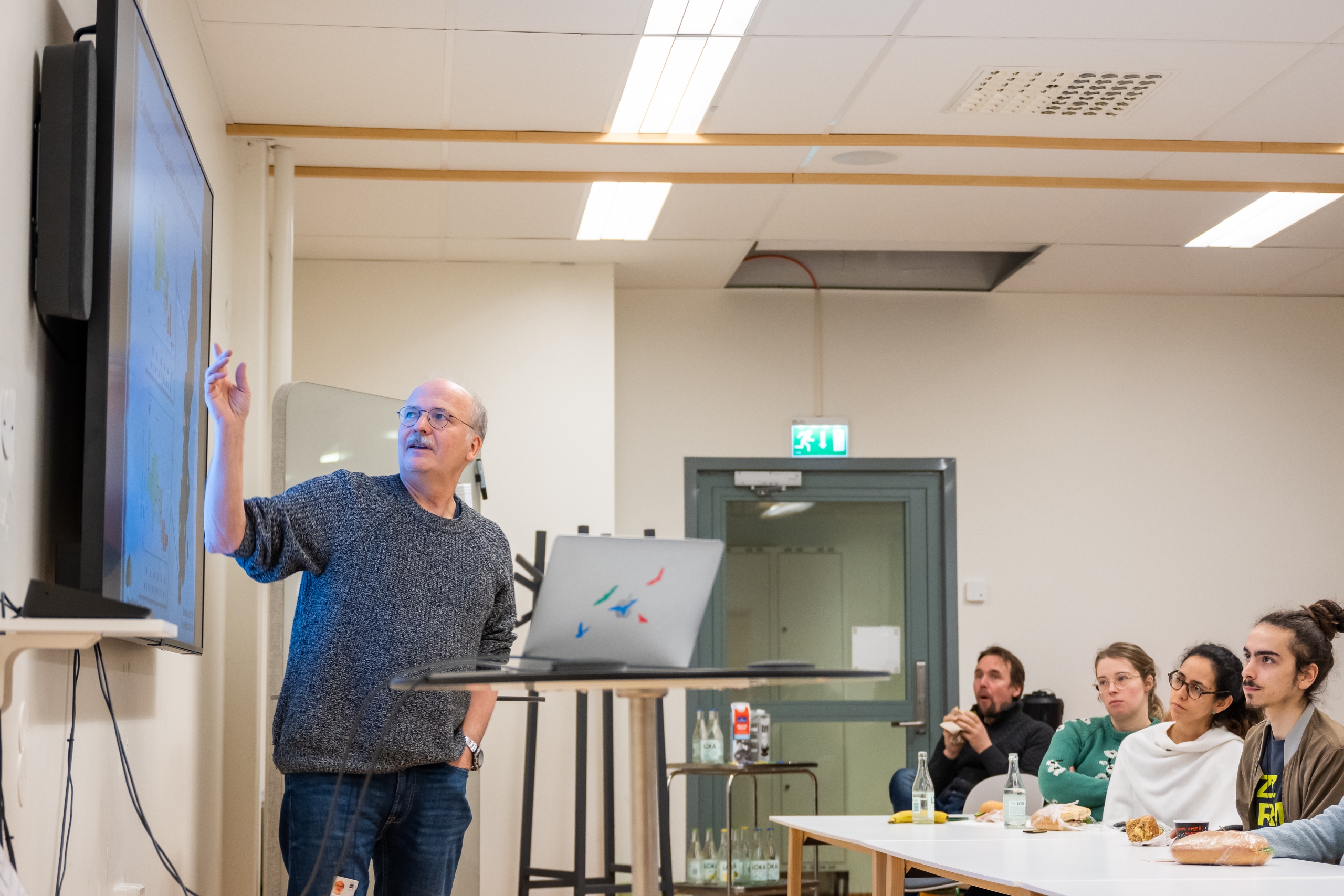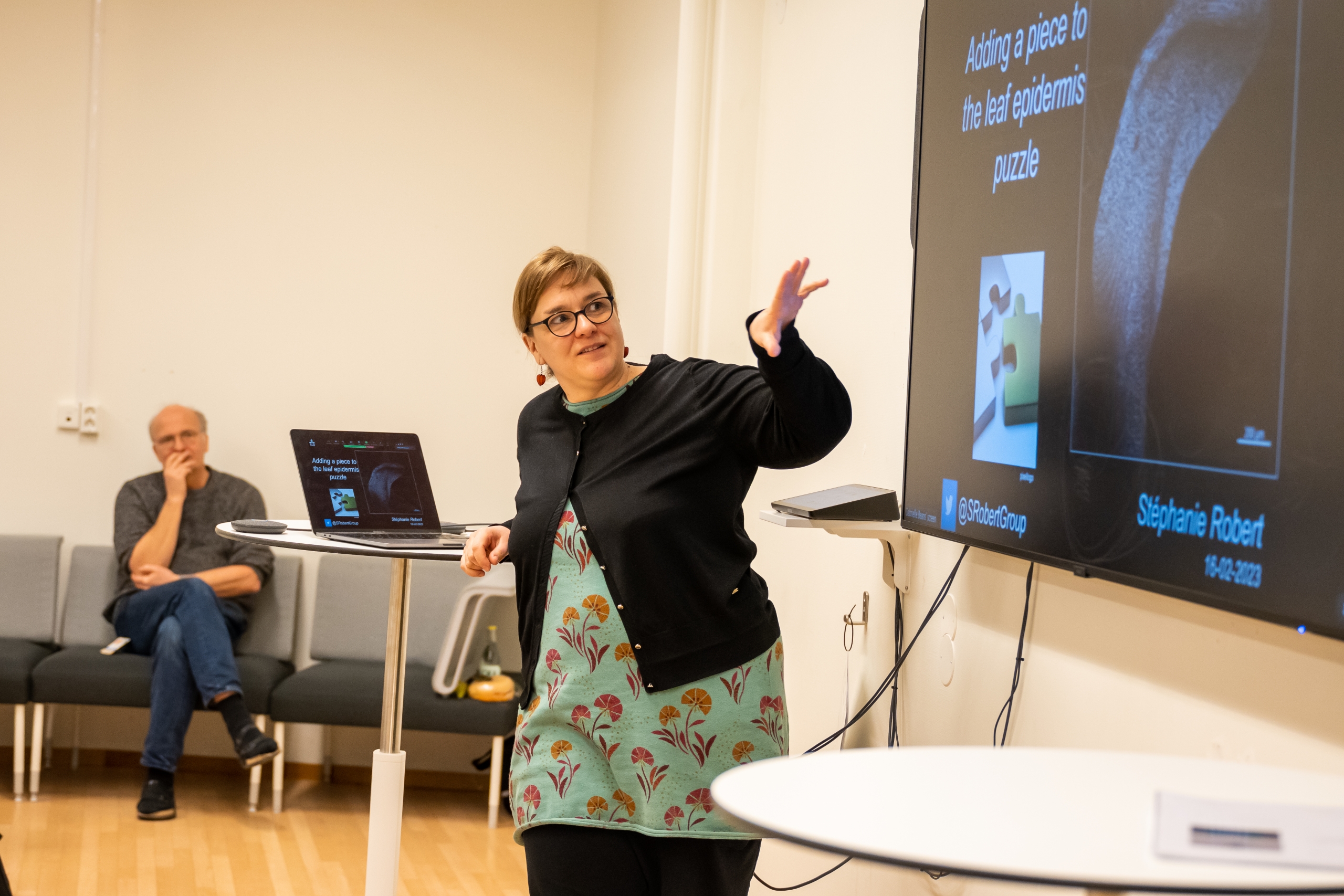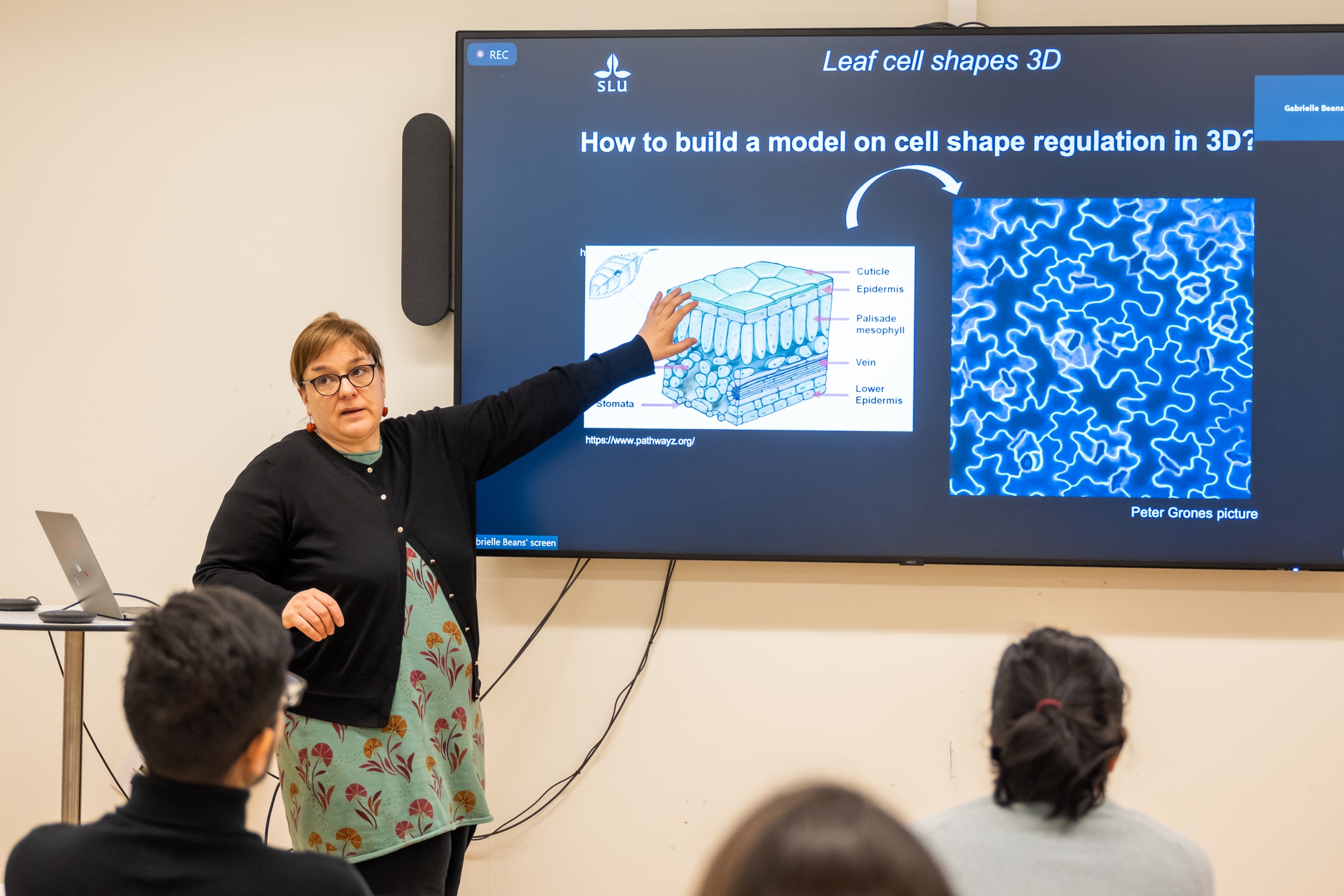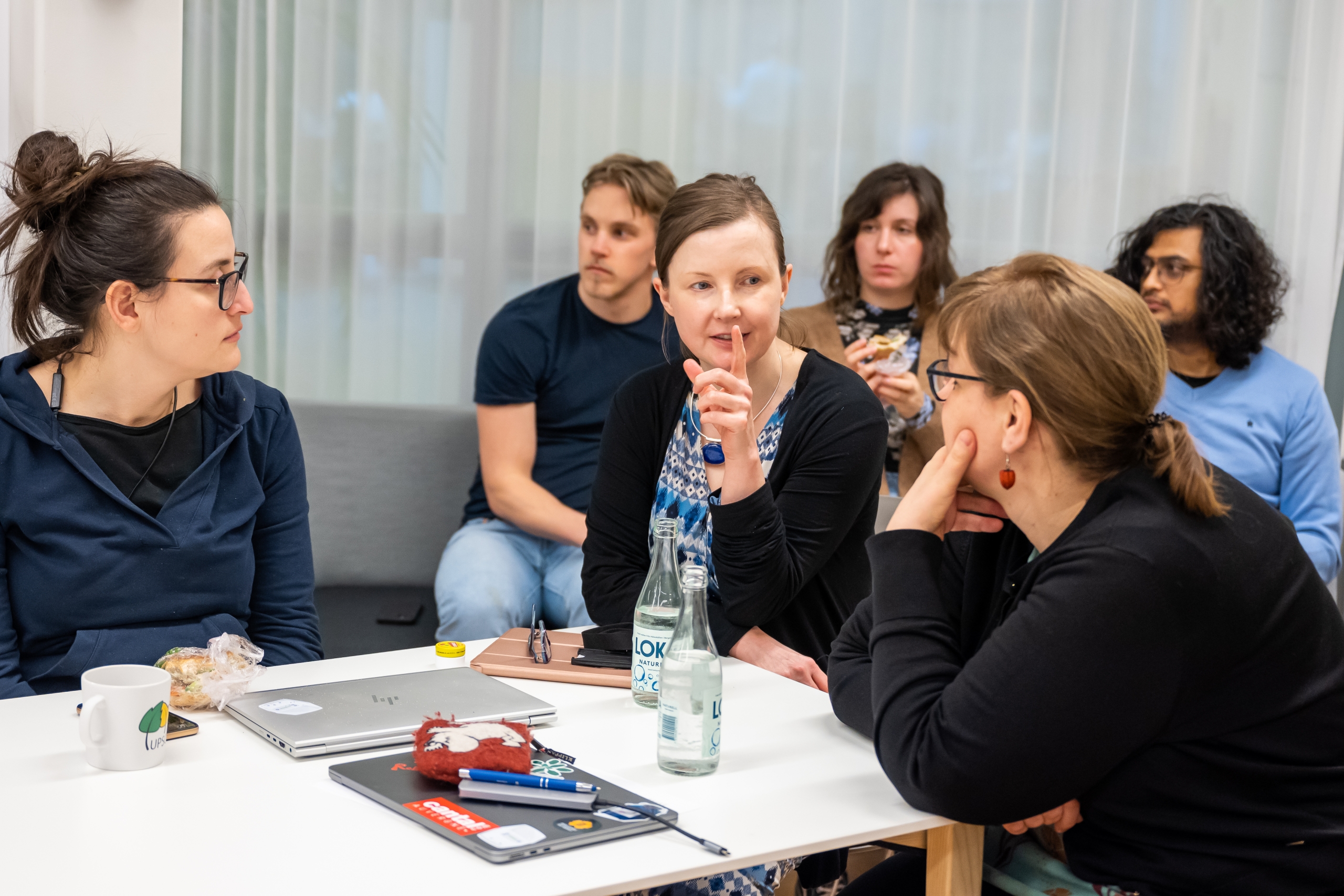Inside and outside leaves
February 16, 2023
Pitch 1: Stefan Jansson: How green is an aspen leaf?
Professor at Department of Plant Physiology, Umeå University.
The leaves of an individual aspen starts degrading its chlorophyll almost the same date every year, although different aspen trees start on different dates (natural variation). The tree translates environmental cues to “knowledge” on which data it is to trigger the senescence process at the right date, but science has so far not been able to identify which cues. A way forward would be to grow the very same aspen individual (aspens can be propagated clonally to produce genetically identical trees) under very many different conditions – or search for the same clonal aspens across Sweden and enlist the help of citizen scientists.
Interested in: Connecting with anyone who can collaborate with or give advice on the development of a smart-phone app to support a citizen science project.
Pitch 2: Stéphanie Robert: Adding a piece to the leaf epidermal puzzle
Professor, Swedish University of Agricultural Sciences, Department of Forest Genetics and Plant Physiology, Umeå
Several plant species develop fascinating jigsaw puzzle-shaped epidermal cells, called pavement cells, on their leaves, which form protruding outgrowths that interdigitate perfectly with those of their neighbour cells. The precise functions of these complicated shapes are not fully clear, but many potential roles have been hypothesized, including spacing out other epidermal cells, enhancing epidermal integrity, cell-cell adhesion, resistance to tension, mechanical strength and flexibility, reducing mechanical stress and allowing growth plasticity. Pavement cell shape regulation is a complex process, as previous research has revealed. Although there are some clues about various roles of the cell wall, mechanical stresses, the cytoskeleton and phytohormones in this process, many details still remain to be revealed.
Interested in: help on modeling the different types of regulations for pavement cell shape acquisition focusing on external and internal mechanical signals.
About Stéphanie Robert: The aim of her research is to elucidate the molecular mechanisms underlying the regulation of plant morphogenesis via understanding the process of cell elongation and its associated signaling pathways. By cell biology, classical genetic and chemical genomic approaches we aim to i) discover new small molecules triggering endomembrane trafficking and signaling events regulating cell elongation, ii) dissect the associated endomembrane trafficking or signaling pathways, iii) understand the link between cell shape determination and cell wall composition.
Webpages: http://srobertgroup.com/ https://www.upsc.se/

